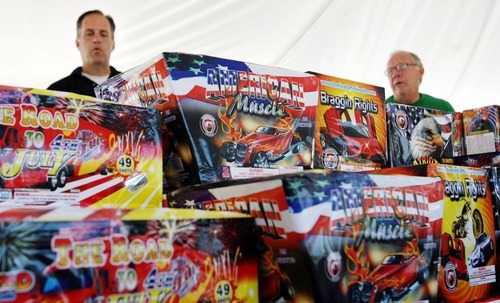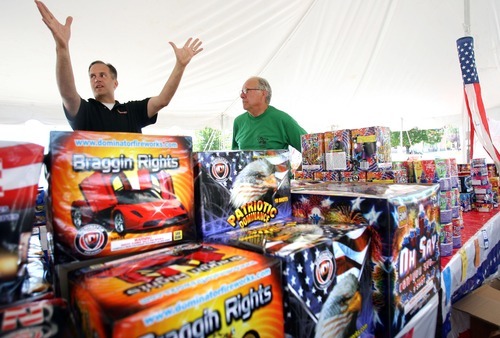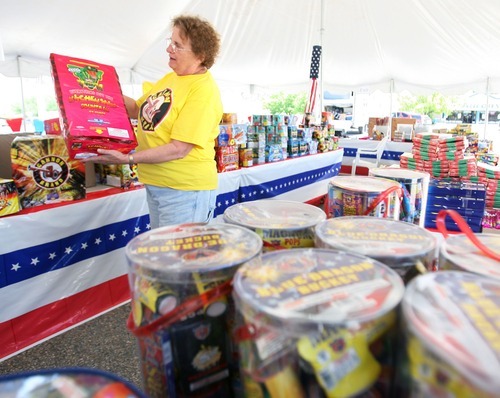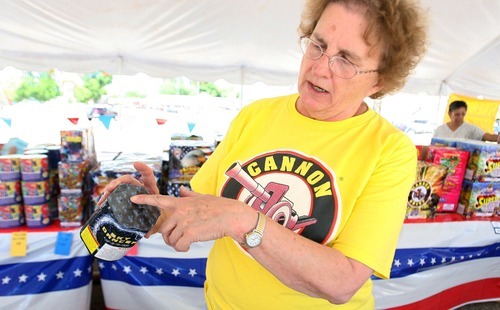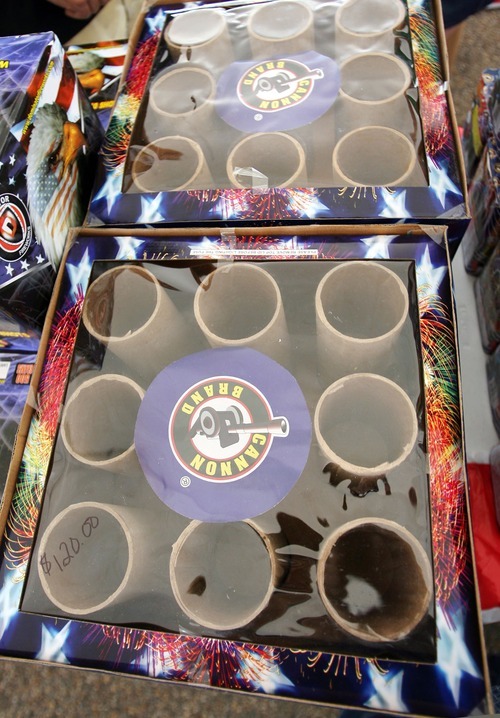This is an archived article that was published on sltrib.com in 2011, and information in the article may be outdated. It is provided only for personal research purposes and may not be reprinted.
Fireworks may be good, wholesome family fun, a patriotic excuse to indulge one's pyrotechnic fantasies.
But the legalization this year of new "aerial repeaters," which zoom 150 feet into the air, is prompting special "handle with caution" warnings from public health and safety officials.
Firework injuries sent 512 Utahns to emergency rooms between 1999 and 2009, according to the Utah Department of Health. The majority were children ages 5-14.
And while the annual rate of injury has slowed over the years, officials urge renewed vigilance.
"The changes to Utah's fireworks laws are significant," said Brent Halladay, Utah State Fire Marshal. "We're asking for everyone's help over the next several weeks by following the law and keeping your families and neighborhoods safe."
Utahns can now light up the skies from June 27 through July 26. Previously, fireworks could only be ignited three days before, on the day of, and three days following July 4 and July 24.
Also open to consumer use are aerial devices known as "repeater" or "cake" fireworks – a collection of tubes fused together in a rectangular box that shoot numerous, colorful explosions high in the air. They were legalized, in part, to discourage the flow of illegal fireworks into the state, said Halladay.
Still not allowed are firecrackers, M-80s, cherry bombs, bottle rockets, Roman candles, single or reloadable mortars, and ground salutes.
Cake fireworks need at least a 30-foot bubble of clearance from trees, carports, structures or other obstacles, Halladay said. Some need as much as 150 feet clearance in the air.
They should be shot from a hard, flat surface. And because of their thrusting power, they should be stabilized on two sides by bricks with one brick facing spectators so as to prevent the device from tipping in their direction.
While explosive devices have the potential for serious harm, health officials say sparklers most injure children.
"Parents tend to think they're harmless so they don't stop and take precautions," said Jenny Johnson, state violence and injury prevention coordinator. "The tip of a sparkler can reach temperatures over 1,200 degrees, hot enough to cause severe third-degree burns."
Handle with care
The safest way to enjoy fireworks is at a public display. But backyard enthusiasts can play it safe by following these tips:
Never allow children to handle fireworks • You must be at least 16 years of age to light them and adults should always supervise.
Have a bucket of water or a running hose nearby • Soak used fireworks in water before throwing them away.
Children should be taught to hold a sparkler at arm's length from their body • And to not wave, throw, or run while holding them. And never hold more than one sparkler at one time.
Keep fireworks at an adequate distance from obstacles • And point them away from people, homes, trees and anything that could catch fire.
Never relight a "dud" firework • Wait 20 minutes and then soak it in a bucket of water. Never let children pick up pieces of fireworks after an event as some may still be ignited and can explode.
Only use fireworks as they're intended • Never attempt to alter or combine them.
Don't hold fireworks in your hand • Wear eye protection and avoid carrying fireworks in your pocket — the friction could set them off.
For more on safety visiti: http://publicsafety.utah.gov/firemarshal.


